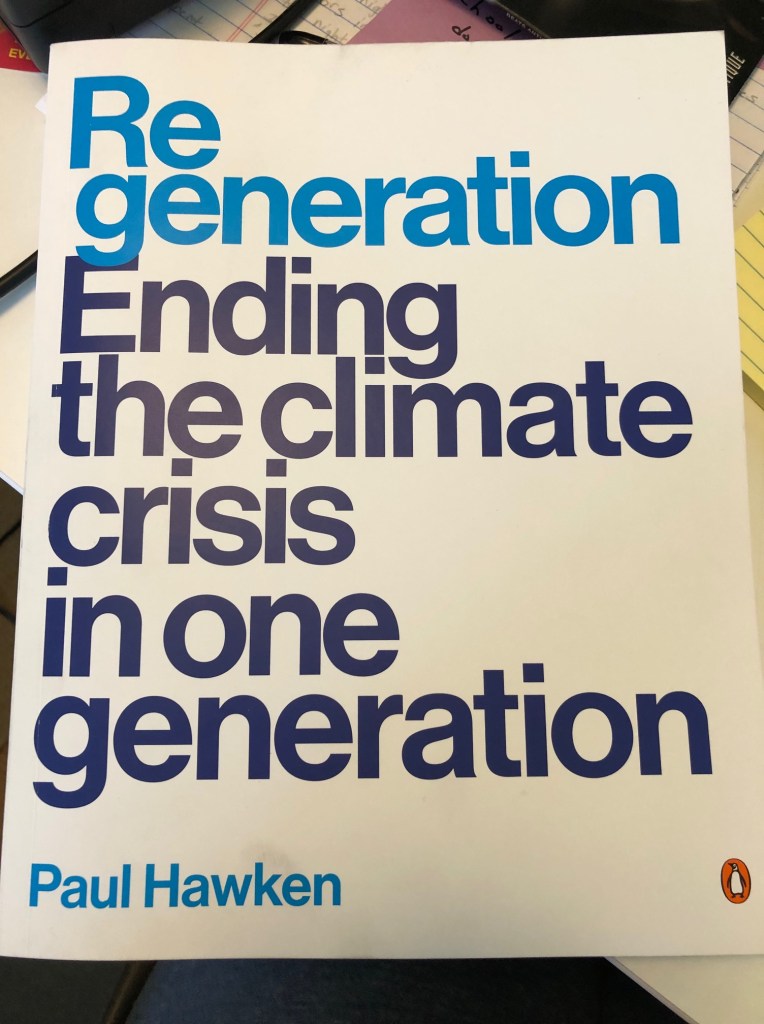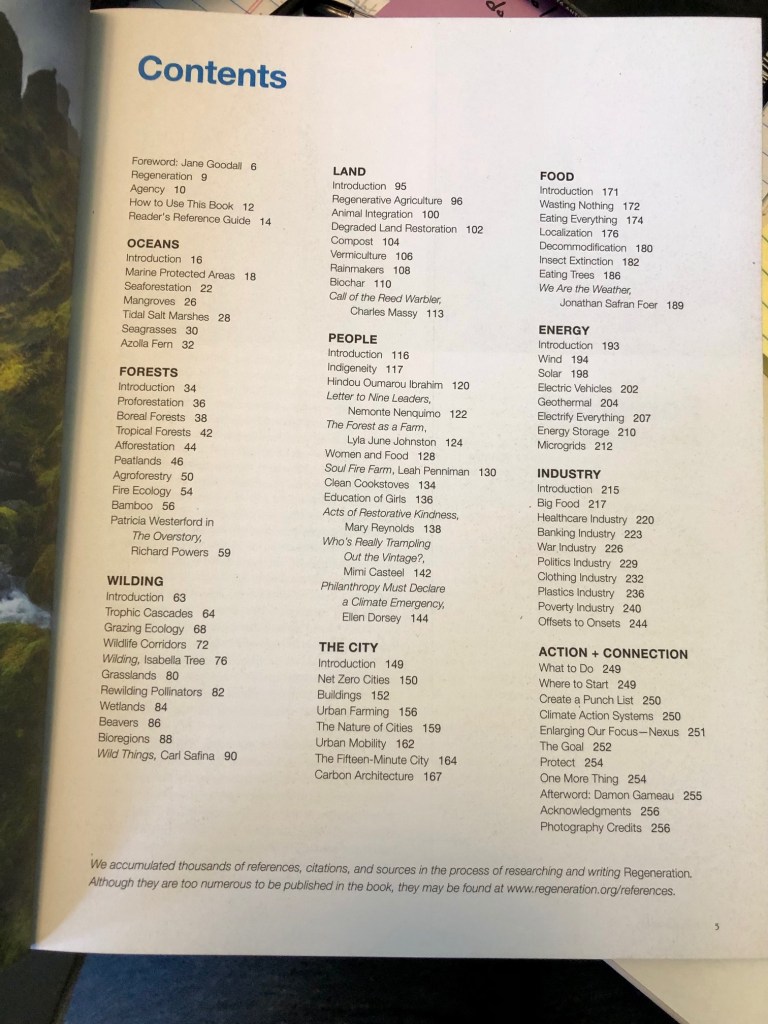I picked up this book after reading a review of it, although I would say the review was more about the Author’s body of work more than the book itself. I’m currently in a phase of looking for books and websites that are action-oriented when it comes to climate change and global warming. I know what the problems are. Nearly all of us have some grasp about the issues because it now makes the news on a daily basis. Global Warming and Climate Change have finally become mainstream issues happening now instead something to contemplate in the distant future.
Here are three quick pictures I took of the first three pages. (My apologies for the poor quality on the latter two.) For more and better quality images see the Amazon link below and use the “Look Inside” feature.
From the cover I expected a standard book written by one author, but upon opening the book I find a attribution page similar to what I would normally see as a Certified Technical Writer. This book is essentially a report compiled by subject matter experts for the public as the end user. Traditionally, “white papers” as they’re called, are used as manuals for specific topics or items in government and business. Most white papers are written by science and technology-related businesses to market and educate other businesses and/or government agencies how to use their service or product. For my certification program I wrote a white paper on how to install a living roof system as my final project.
The second page is the table of contents page. I don’t judge a book by its cover, I judge a book by its index and table of contents (TOC) page. This book has no index, so the TOC has to do the work for both. Overall, I give this book an 8/10. In a list at the end of the book they mention the “Azolla Fern” as an important place for carbon sequestering. When I went back to find it in the TOC I didn’t see it, so I went online to understand that it’s an aquatic plant that can cover the surface of ponds, lakes and slow moving rivers. Going back, I now see the plant listed under “Oceans.” After reading the way the topic is covered in the book, “Wilding” or “Food” would have been a better place for it.
What really caught my eye about the contents page is seeing “Poverty Industry” under the Industry heading. I’ve never thought of poverty as an industry. I would have expected to see it under the People heading. After reading the section my first thought is, “How to talk about greed without using the word greed.” If we boil the subject down to its primal essence, aren’t we really talking about greed?
Pro:
Layout – Each topic gets a gorgeous picture representing the topic and about two pages of text on average. Its like a modern, limited encyclopedia of climate issues. This makes it easy to pick up and browse the topics that interest you the most.
Con:
Title – The title implies action items we can do to make a difference in one generation. I was expecting a “how-to” book that tells the reader what they can do to start combating climate change issues now. This is not the heart of the book though. The action section of the book is seven pages and relies heavily on encouraging the reader to visit the website. The website is beautiful and worth a visit.
Ironically, the final paragraph entitled “One more thing” within the Action + Connection Chapter starts with: “It’s not your job to save the planet.” Followed a few sentences later with: “We cannot do this [end the climate crisis} if we believe or assume others will do it for us.”
So we were off the hook, only to be put back on the hook all in the span of a paragraph.
I’m making it my job to help save the planet. I think it should be part of everyone’s job as a human being to do better. I know we’re capable of taking on complex challenges when we work together and put in the effort. I also know I’m not alone in this growing concern and frustration. This blog and so many others are rising up to give a voice to our climate change anxieties and seeking out solutions. We know in our hearts things have to change.
Book Website: Welcome to Regeneration | Project Regeneration
If you’ve read the book, what did you think about it?
While my reading list is currently backlogged, I’m always open to recommendations. Is there a book you think I should read?
Thank you for stopping by for a visit!




Thanks, Melanie, for the link to the book’s website as I avoid using Amazon wherever possible! Have a great weekend. 💐🙋♂️
LikeLiked by 2 people
I ordered my copy through Barnes & Noble for in-store pickup. It is the only bookstore close me now and I would hate to lose it! Such nice people work their too!
LikeLiked by 2 people
* there Hahaha
LikeLike
Sounds like an interesting book. I am doing my best re climate change
I think my biggest vice is buying clothes. Next year I might resolve to make do and mend – or at least set myself some rules – though it would be interesting to see how long I could go without buying new shoes.
Greed, and lust for shiny things will be our downfall.
Sx
LikeLiked by 2 people
Good quality shoes are important. I wear mine out a pair a year aside from the boots I wear. I hate clothes shopping so that helps keep me thrifty. I have a shirt I bought at a thrift store for $1 that I’ve now been wearing for 25 years!
LikeLike
Hi Melanie, the regeneration website is very interesting. I might have to dive into that a little more. One book that I really enjoyed around saving the planet was Tom Brown and Randy Walker’s Guide to Healing the Earth. It is written in more of a story format with lessons from Grandfather. It might not meet your need, but it could be a fun read for a rainy day.
LikeLiked by 2 people
Thank you, Mark! I’ll look into it!
LikeLiked by 1 person
A good review on “Regeneration: Ending the climate crisis in one generation”. Thank you 😊
LikeLiked by 1 person
Thank you! Overall, its a good book, it just wasn’t what I was looking for/hoped it would be.
LikeLiked by 1 person
You are welcome, Melanie 😊
LikeLiked by 1 person